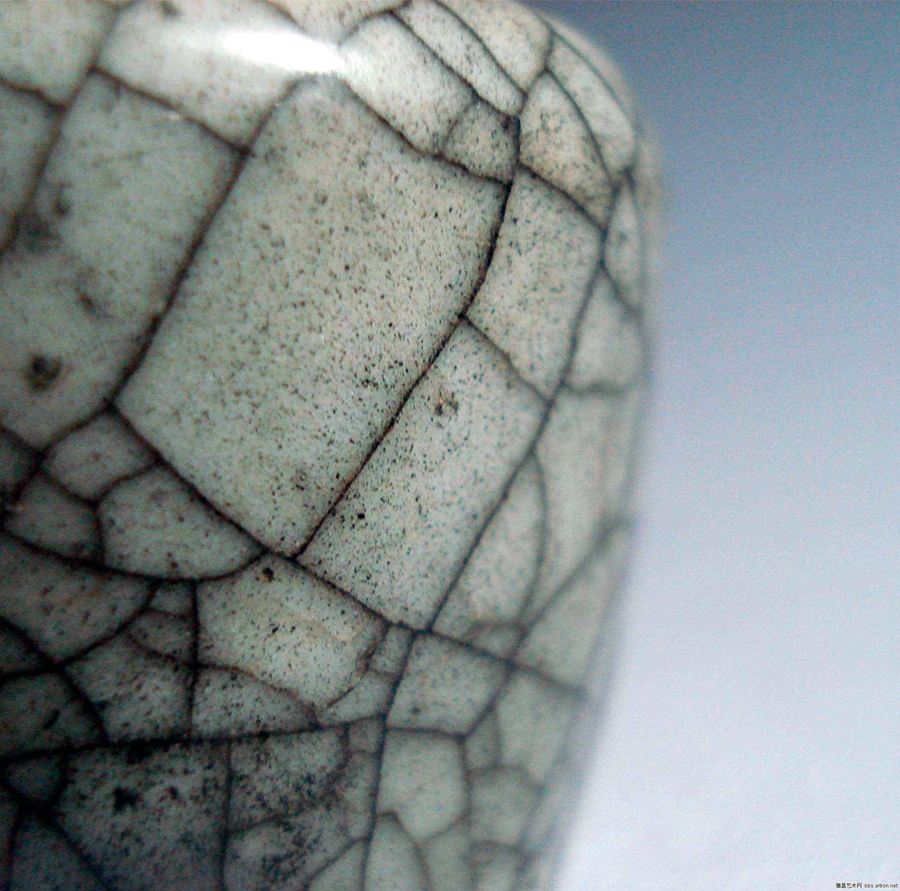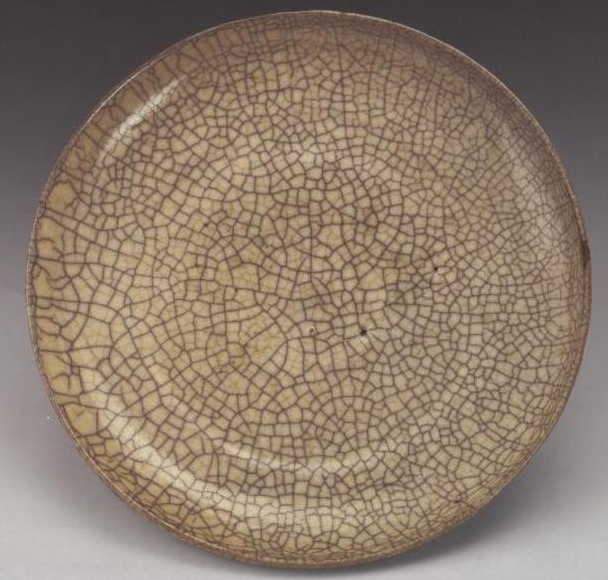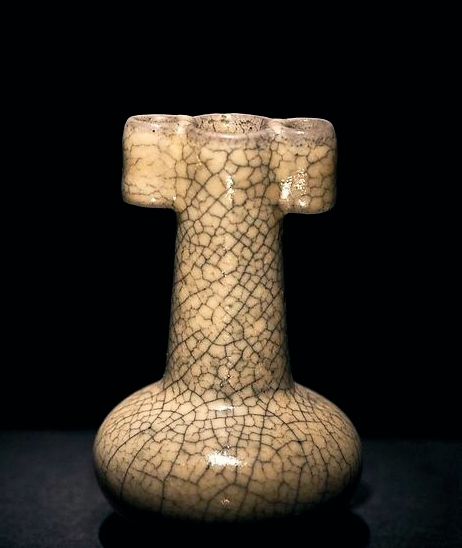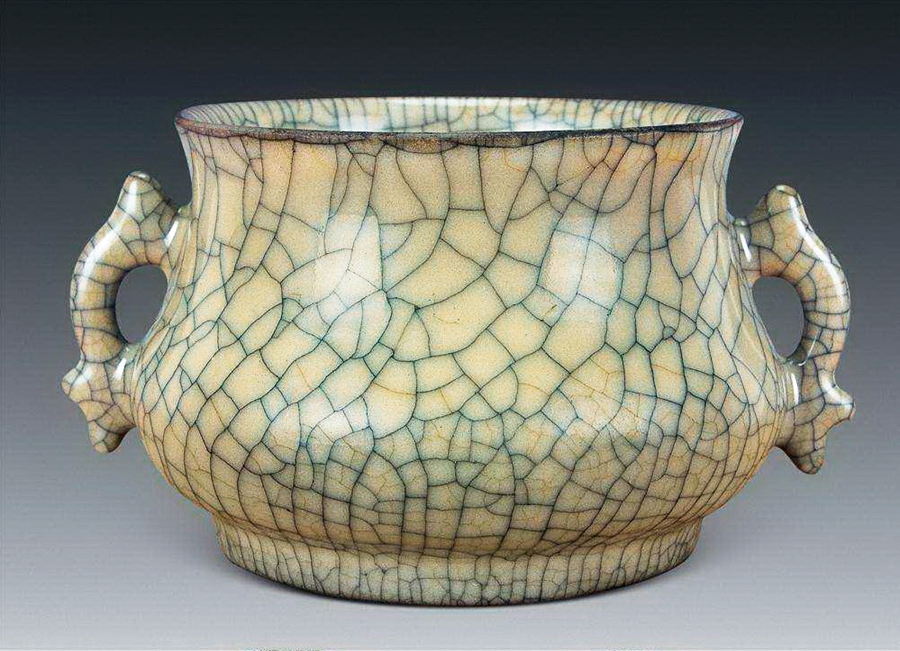By SONG XIAOYAN
IN the early days of the last century, a once tranquil small village in Longquan City, Zhejiang Province was suddenly filled with hundreds of people desperately excavating for porcelain wares every day, as the place is said to be the location of a Ge kiln, one of the five most famous kilns of the Song Dynasty (960-1279). The porcelain wares produced here are known as Ge porcelain ware. With only about 100-odd works having survived to date, rarity makes Ge porcelain, even its broken pieces, very precious.

The origin of Ge porcelain still remains mysterious – neither the exact site of any Ge kiln nor historical records of the Song Dynasty about the Ge kiln have been found. What people have known about it all come from incoherent records with the earliest one only dating back to the Yuan Dynasty (1279 -1368). For a long time, the Ge kiln has been a much researched topic for archaeologists, experts on ancient porcelain wares, and collectors. People, based on the descriptions in historical records, come to Longquan, in hope of finding the site of the Ge kiln. However, nearly one century has passed, people have not made big progress in this regard, making the Ge kiln and its porcelain even more mysterious and attractive.
The body of Ge porcelain ware is made of sand or clay. The wall is either thin or thick, with varying shades and hues of black, grey, dark grey, light grey, and yellowish brown. Its glaze features different colors including lavender grey, moonlight white, putty, and bluish yellow. The diversity make people believe those pieces of works were produced by different kilns. The Ge porcelain wares are similar to Guan porcelain, which were produced by Guan kiln, another famous kiln of the Song Dynasty, in terms of style and porcelain aging indicators.
Ge porcelain plate
of Song Dynasty
There are different stories about Ge porcelain. It has been a dream for numerous collectors to possess a Ge porcelain ware. Ge porcelain wares feature a classical crazing pattern that resembles cracking ice. Its glaze is bright and smooth, with thick and thin lines interweaving with each other. The thick lines are called “iron wires” and the thin lines are called “golden threads.”
The thick lines are long bluish-black lines intersecting each other. The crackles are formed on the surface while it is taken out from a kiln. Craftsmen filled the crackle with carbon black pigment when it is still hot, forming the thick dark lines. The thin and small lines are normally winding and appear iron oxide red and iron oxide yellow. The color depth is decided by the time it spent buried underground. The longer it stays in the soil, the more iron permeates into the crackles, making the color deeper.
Greyish-blue glazed Ge porcelain
vase with pierced handles from
the Song Dynasty
Housed in The Palace Museum in Beijing, this piece resembles the shape of sacrificial vessels of the Western Zhou Dynasty (c. 1100 - c. 771 BC). The handles are closely connected with the vase’s mouth, creating a balanced visual effect with its round belly at the bottom. It is covered with thin crackles, featuring an elegant and solemn style.
The golden threads and iron wires connect with each other, but in fact they form two different webs. The fine crackles on porcelain resemble wrinkles on human faces. As time passes on, the alternation of seasons make porcelain expand with heat and contract with cold. Other factors such as pressure from soil and erosive effects exerted by oxides in the air also affect the formation of the crazing pattern. The crackles on relatively new porcelain are often straight and wide, forming shapes such as quadrangles and pentagons. The crackles on old porcelain are gradually formed over a long time; therefore, they are often winding and look natural.
Such naturally formed crackles and its fine and smooth glaze make Ge porcelain adorable to both audience and collectors.
Incense burner with fish-like handles
Amongst the collection of the Taipei-based Palace Museum, this piece resembles the shape of Gui, a kind of bronze sacrificial vessel used in the Shang Dynasty (c. 1600 - c. 1100 BC) and Zhou Dynasty (c. 1100 - 221 BC). The incense burner features an “S-shaped” contour, with its neck slightly curving inward and round belly. There are two fish-shaped handles on the two sides and circular foot at the bottom. The piece has a greyish blue glaze and crazing pattern formed with golden threads and iron wires. On the bottom are six marks of spikes, indicating the holder on which it stood during the burning process.
Generally the Ge porcelain glaze resembles shiny, greasy skin, which is not very illuminant. The glaze is usually deep in color and features uneven coverage in thickness. However, there is the finest Ge ware, with its glaze extremely smooth and bright, which looks more like jade rather than porcelain. The Ge ware made during the Song Dynasty features multiple glazed layers. Under the magnifying glass, we can observe layers of lots of tiny white bubbles converging in the glaze. Up around the “mouth” area of a piece of Ge porcelain, the glaze is thinner, bearing a color of greyish black and purple. Down around its base there is no glaze, with a color of iron brown, featuring primitive simplicity and an elegant style. The aforementioned characteristics are also important features that are referred to discriminate false from the genuine Ge porcelain wares.
SONG XIAOYAN is a course planner of antique chinaware at the Ancient Porcelain Courtyard Museum.



